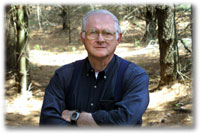When I first heard about the successes with hydraulic
fracturing as a new way to extract natural gas and oil buried deep in the
bedrock of several regions of the American Northeast, West, and Southwest, I
was intrigued. But I was also skeptical about the promise of job opportunities
and economic development offered by this relatively new technique.
Then I learned that the special
kind of sand needed for the fracturing process could be found primarily in
Wisconsin and parts of Minnesota and southeast Iowa. As a native of the “sand
counties” of Wisconsin, I became even more interested and concerned. After many
decades of working in and observing rural Wisconsin, I’ve learned that usually
what sounds so good—more jobs and economic development—often has a down side,
too.
I began reading newspaper reports
that said frac sand mining was spreading, and that companies were buying entire
farms in western Wisconsin to turn them into frac sand mines. I contacted the Wisconsin Geological and Natural History Survey offices, and from the WGNHS I learned more about hydraulic fracturing and especially about sand mining—what
it is, how it is done, and some of the challenges it presents.
By then I knew that the topic of
frac sand mining would fit perfectly within the series of books I’ve been
writing about a fictional county in Wisconsin, my Ames County saga. So far I
have written five novels, all published by the University of Wisconsin Press and focusing on issues the people in
that county have faced in past and recent history: soil conservation, land use
planning, water pollution, and large-scale farming.
So that’s how the idea for the
new novel, The Great Sand Fracas of Ames County, was
born. I continued reading reports from many Wisconsin newspapers to see the
ways local people were debating whether and how to allow frac sand mines to
open in their communities.
Many people saw sand mining as an economic bonanza
bringing much-needed jobs and tax revenues to their communities. Others worried
greatly about environmental effects: processing the sand requires great amounts
of water; fine dust from the process can cause respiratory problems; rivers and
streams could become silted or contaminated with runoff; lights, noise, trucks
and trains would transform the quiet countryside.
And, as is often the case with new endeavors, especially
those expanding rapidly, laws and rules governing frac sand mining lag well
behind the growth of the industry. Sand mining rapidly became a political
issue, forcing local officials to vote yea or nay on zoning, regulations,
taxation, and other policy issues regarding the mines.
In many of the communities affected, especially in
western Wisconsin, emotions flared. Citizens who once were friends became
adversaries as they took positions for or against a frac sand mine in their
neighborhood.
In my novel The Great Sand Fracas of Ames
County, I
illustrate how a small Wisconsin community (fictional Link Lake) copes with the
possibility of a sand mine opening in the location of their revered community
park. The local historical society becomes involved when the sand mine
officials declare that they must cut down the Trail Marker Oak, a historic
landmark along an old Menominee trail, to gain access for large equipment. With
the hope for increasing the tax base and keeping more jobs in the village, the
Link Lake Village Board approves leasing the park to the mining company, with a
resulting uproar that divides everyone in the village.
Through fiction I’ve tried to illustrate, in an
entertaining way, how complicated local development issues can be. Too often
emotions can trump logic, historic fact, and scientific findings. Clear
thinking can disappear in a cloud of angry words.
In cases such as my Ames County
story, and in my other five novels that all take place in this fictional
Wisconsin county, I advocate the need for critical thinking, which allows
for economic, environmental, historical, and political views to be examined in
a clear-headed and deliberate way to make wise choices for our present and our
future.
THE OLD TIMER SAYS: Who would have thought sand
would become so valuable.
STILL ROOM: For those interested in writing your
life stories, a few openings are still available for my November 1, 9-4
workshop. Contact The Clearing for
sign-up information: www.theclearing.org.
UPCOMING
EVENTS:
October
23, 5:00 p.m. dinner, 6:00 p.m. presentation: Green Bay Neville Museum. Horse
Drawn Days. Registration required.
November
1, 9:00 to 4:00 “Writing From Your Life Workshop” The Clearing, Ellison Bay, WI
November
1, 4:30 p.m., Book signing WI The Great Sand Fracas of Ames County. The
Clearing, Ellison Bay, Wi.
November
8, 9:00-11:30, Plymouth Arts Center, Plymouth, WI. Sponsored by Sheboygan County Research Center.
Barns of Wisconsin.
November
12, Noon. Wisconsin Historical Society Tour, La Crosse, Weber Center for the
Preforming Arts. Farm Stories.
November
14, 6:30 dinner. Port Washington
Library. Meeting at First Congregational
Church, 131 Webster Street, Port Washington.
How I became a writer.
December
7, 1:00-2:15 and 2:30-3:15 Kalahari Resort, Wisconsin Dells (Two sessions) Wis
Farm Bureau Meeting. Writing From Your Life for Children and Grandchildren.
December 13, 1:00-5:00 p.m. Barnes and Noble, La Crosse, Book signing.

No comments:
Post a Comment